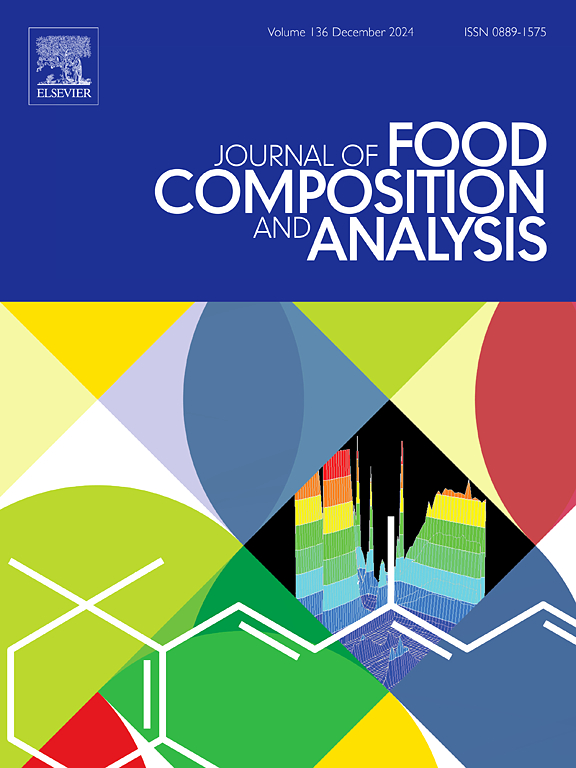Aroma characterization and reconstitution of strong-aroma baijiu: Insights into sensory profiles and key odor-active compounds from Chinese core production areas
IF 4.6
2区 农林科学
Q2 CHEMISTRY, APPLIED
引用次数: 0
Abstract
Strong-aroma baijiu, a globally significant distilled spirit, is renowned for its complex aroma profile. This study employed sensory analysis and advanced analytical techniques to characterize the aroma profiles of ten commercial baijiu samples from different regions and alcohol levels. A total of 97 odor-active compounds were identified, with 26 key compounds, including nonanal, 2-ethyl-6-methylpyrazine, hexan-1-ol, hexanoic acid, octanoic acid, ethyl pentanoate, playing crucial roles in aroma differentiation. Partial least square-discriminant analysis (PLS-DA) effectively classified samples into sensory groups, and aroma reconstitution experiments confirmed the contribution of 27 compounds to the overall aroma profile. These findings provide valuable insights into the chemical and sensory foundations of strong-aroma baijiu, offering practical guidance for quality control and product development in the baijiu industry.
强香气白酒的香气表征与重构:中国核心产区的感官特征与主要气味活性物质的研究
白酒是一种全球重要的蒸馏酒,以其复杂的香气而闻名。本研究采用感官分析和先进的分析技术,对不同地区、不同酒精度的10种商品白酒样品的香气特征进行了表征。共鉴定出97个气味活性化合物,其中26个关键化合物,包括壬醛、2-乙基-6-甲基吡嗪、己烷-1-醇、己酸、辛酸、戊酸乙酯等,在香气分化中起关键作用。偏最小二乘判别分析(PLS-DA)有效地将样品划分为感官组,香气重构实验证实了27种化合物对整体香气谱的贡献。这些发现为深入了解强香气白酒的化学和感官基础提供了有价值的见解,为白酒行业的质量控制和产品开发提供了实用指导。
本文章由计算机程序翻译,如有差异,请以英文原文为准。
求助全文
约1分钟内获得全文
求助全文
来源期刊

Journal of Food Composition and Analysis
工程技术-食品科技
CiteScore
6.20
自引率
11.60%
发文量
601
审稿时长
53 days
期刊介绍:
The Journal of Food Composition and Analysis publishes manuscripts on scientific aspects of data on the chemical composition of human foods, with particular emphasis on actual data on composition of foods; analytical methods; studies on the manipulation, storage, distribution and use of food composition data; and studies on the statistics, use and distribution of such data and data systems. The Journal''s basis is nutrient composition, with increasing emphasis on bioactive non-nutrient and anti-nutrient components. Papers must provide sufficient description of the food samples, analytical methods, quality control procedures and statistical treatments of the data to permit the end users of the food composition data to evaluate the appropriateness of such data in their projects.
The Journal does not publish papers on: microbiological compounds; sensory quality; aromatics/volatiles in food and wine; essential oils; organoleptic characteristics of food; physical properties; or clinical papers and pharmacology-related papers.
 求助内容:
求助内容: 应助结果提醒方式:
应助结果提醒方式:


